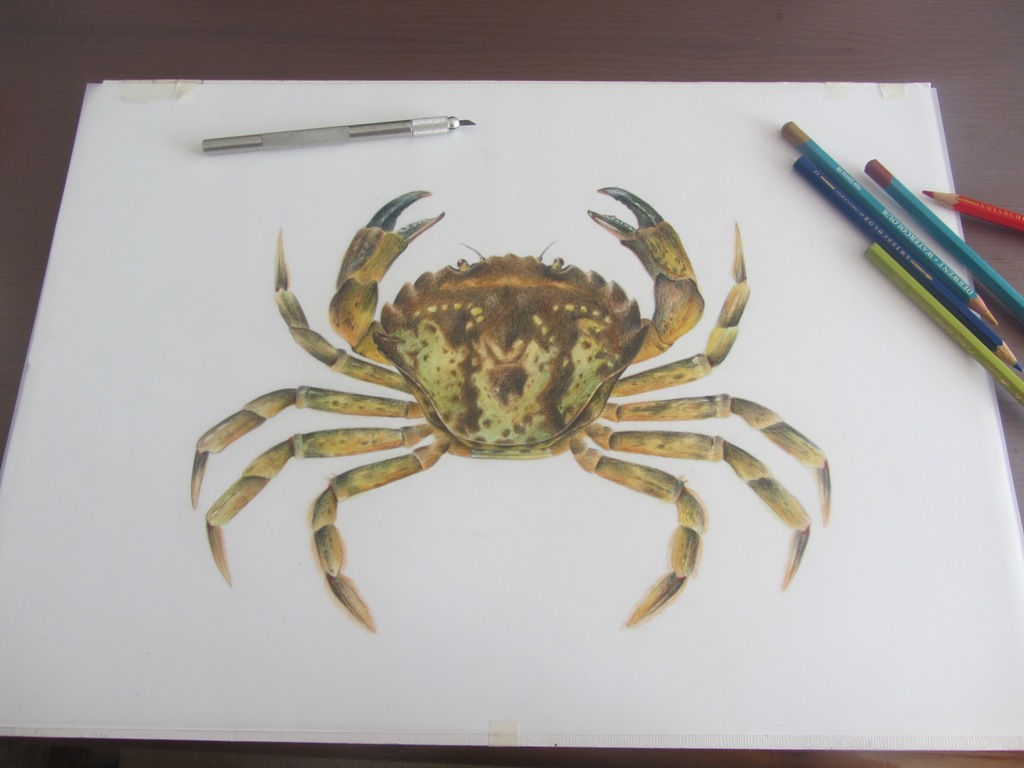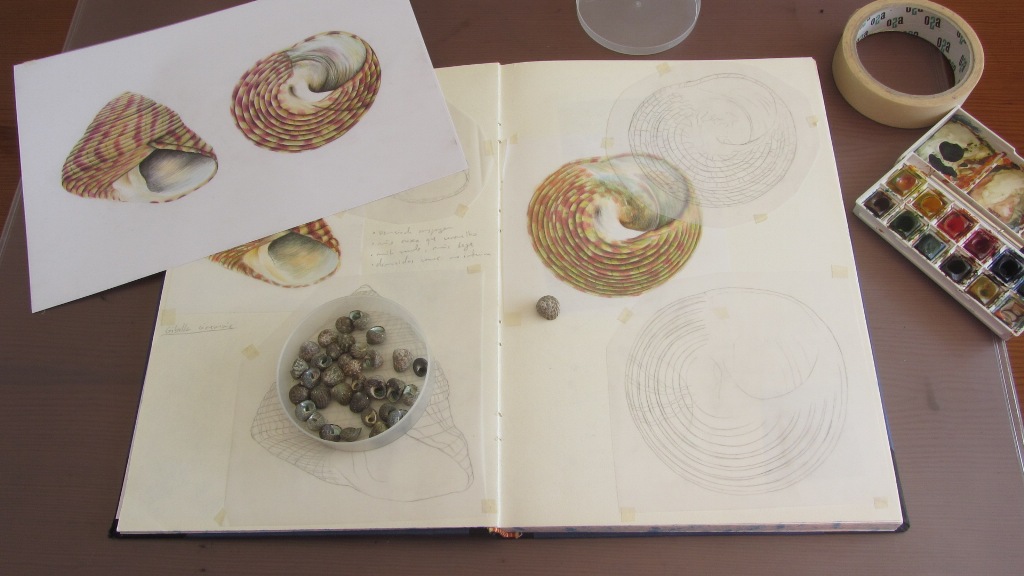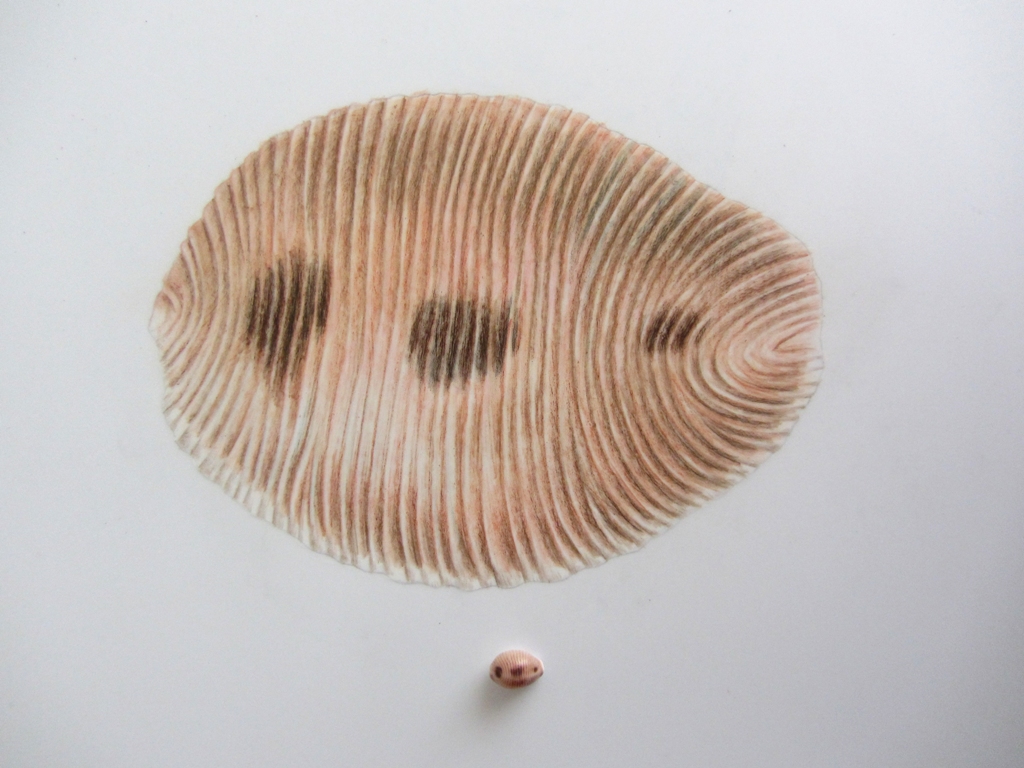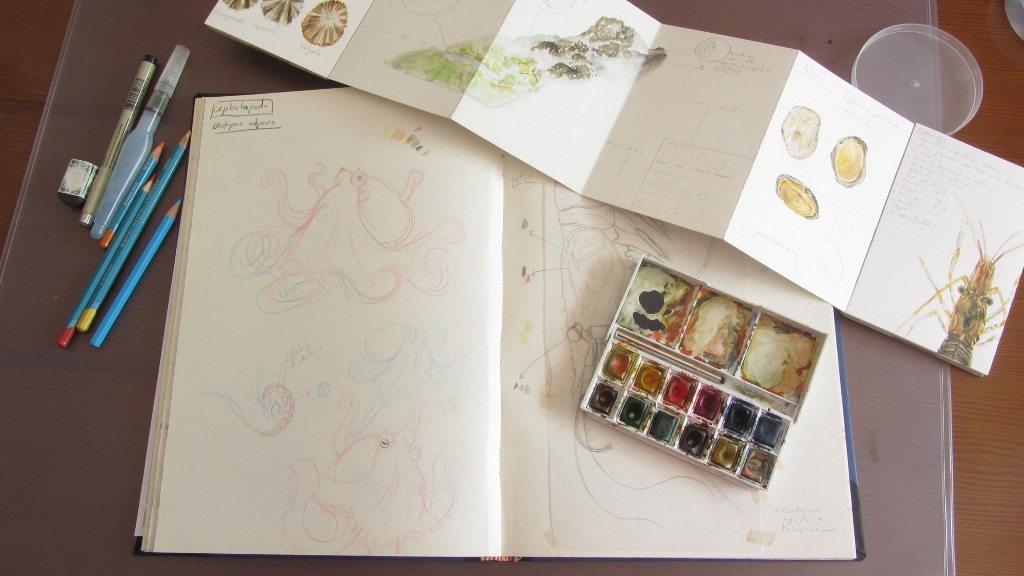Marília Santos, 24, has spent a year drawing crabs, mussels, barnacles, anemones and many other inhabitants of tide pools, for her master’s degree in scientific illustration. Illustrating species living in the intertidal zones on Portuguese coast has revealed her a whole new universe of wildlife unknown until then.
“When I begun I had no idea of what existed out there”, she says to Wilder. But now, this graphic designer knows all the scientific names of the species that she studied for hours, observing and drawing them. Sometimes on the beach, others in her studio, based on photographs.

At the beach, doing fieldwork in 2013/2014, Marília learnt, for instance, that the tide pools are real nurseries, completely different from one another, depending on whether they are next to the sand or by the sea.
She also learnt that if someone is persistent enough, peeping in rock holes, it is possible to meet an Octopus vulgaris, the only octopus species that lives on the Portuguese coast, especially in Algarve.
And she found out lots of other things too: the beautiful pattern of the sea snail’s shells or that “when you turn a rock you can find a whole world beneath it”.

Marília learnt, above all, that Portugal has “an enormous richness” of species that live by the tide pools, especially at Luz Beach (Algarve), Cabo Raso (Cascais) or Arrabida, some of the best spots to see this kind of wildlife in Portugal.
Working with Pedro Salgado, a scientific illustrator, and with José Paula, a marine biologist, Marília wants to complete her work and share what she knows with others.
This scientific illustrator explains that in the Portuguese market, guidebooks for intertidal zones are mainly made in United Kingdom and, because of that, have species that don’t exist in Portugal or others that are not quite the same. Other guides are too scientific. So, she wants to publish her own guidebook.

During her master’s degree, Marília has completed 43 illustrations for species identification, mainly gastropods and crustaceans. But there are, at least, 200 species in the coast of Portugal. Her work is far from finished.
The team is searching for ways of financing this project, in Portugal and abroad, so that she can complete her work. “I will need another one year and a half to get things done.”
It’s almost certain that the first edition is going to be in English. There’s already a prototype with identification keys for some species, the illustrations and context information. The material is waterproof in order to be used safely near the water.
Above all, “the main goal is to reach the public”, to show this small world so unknown and yet so close for those who go to the beach. “We don’t want to be locked up in a university drawer”, says Marília.


